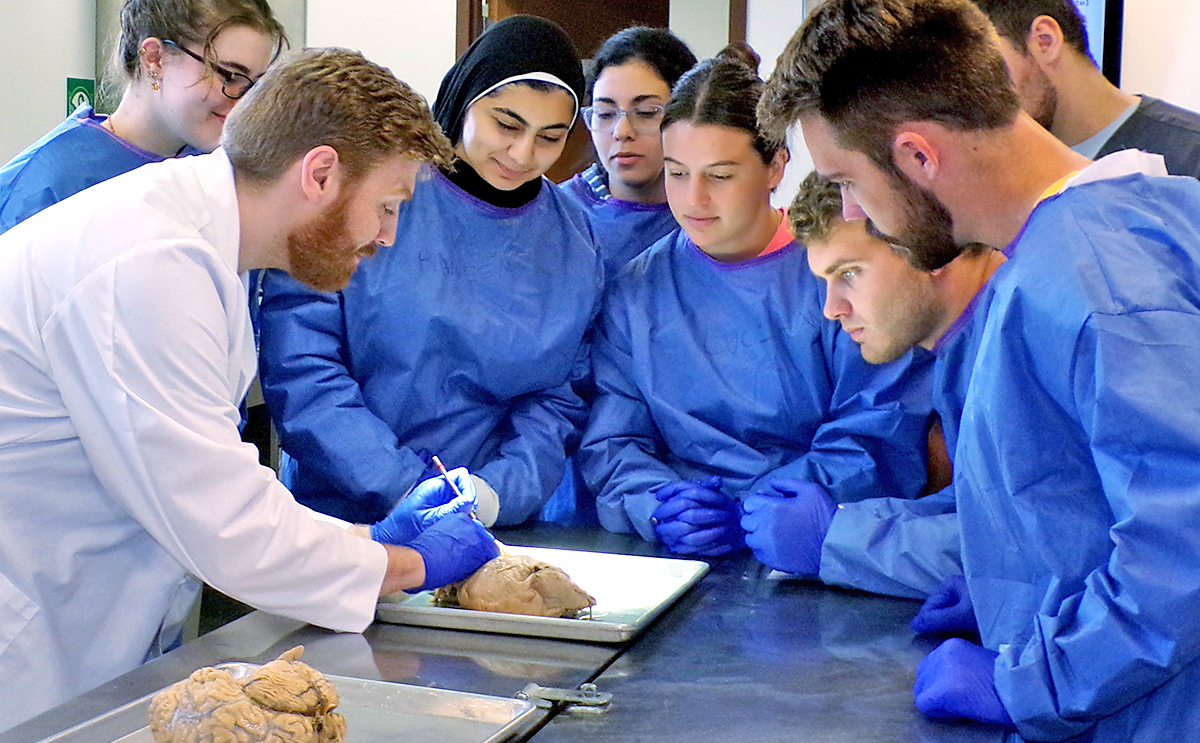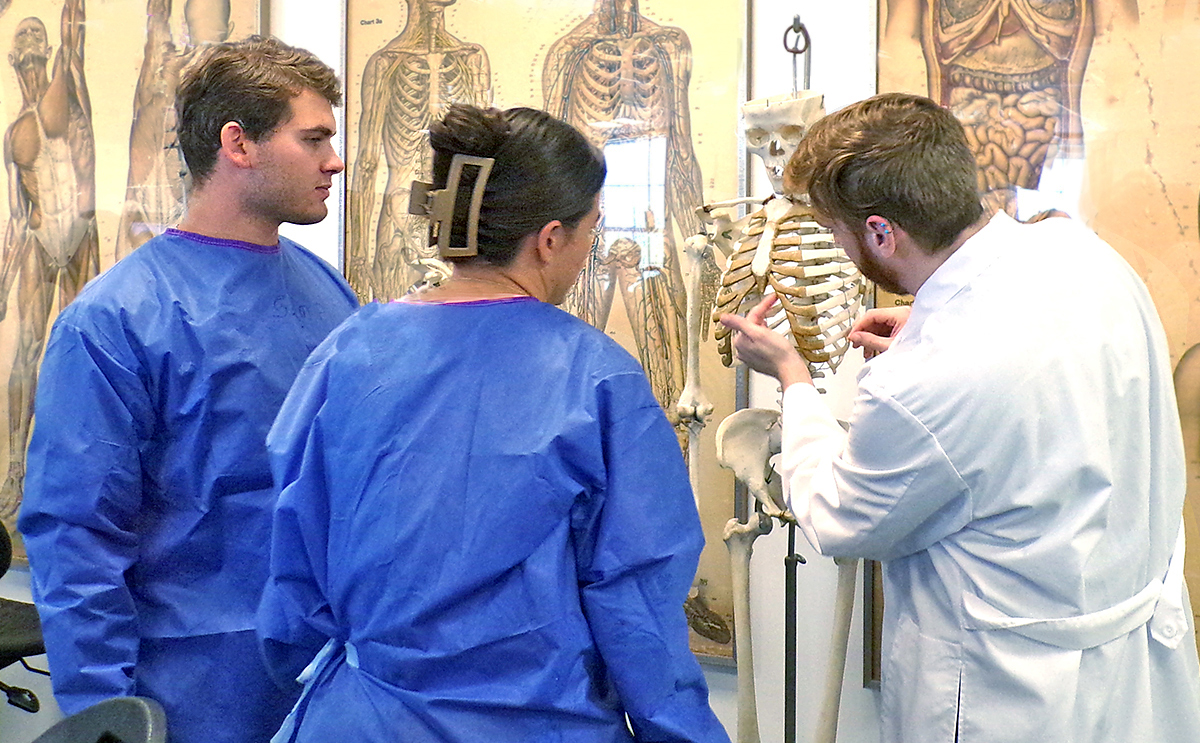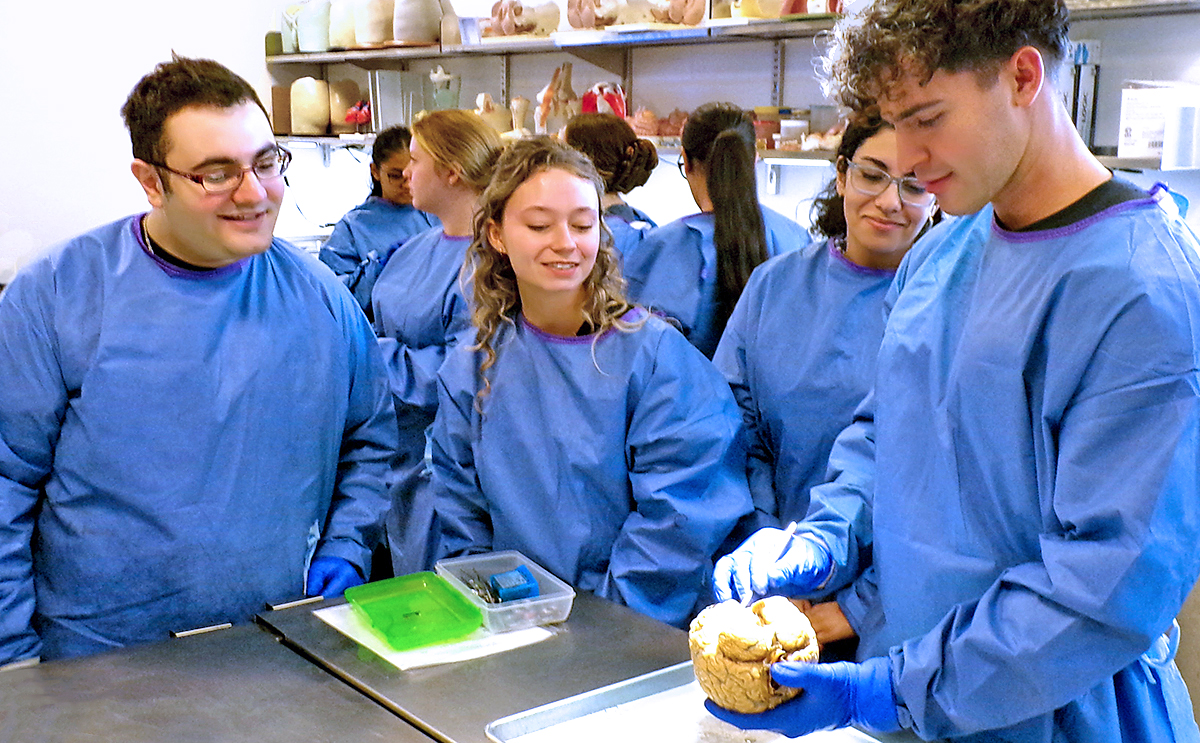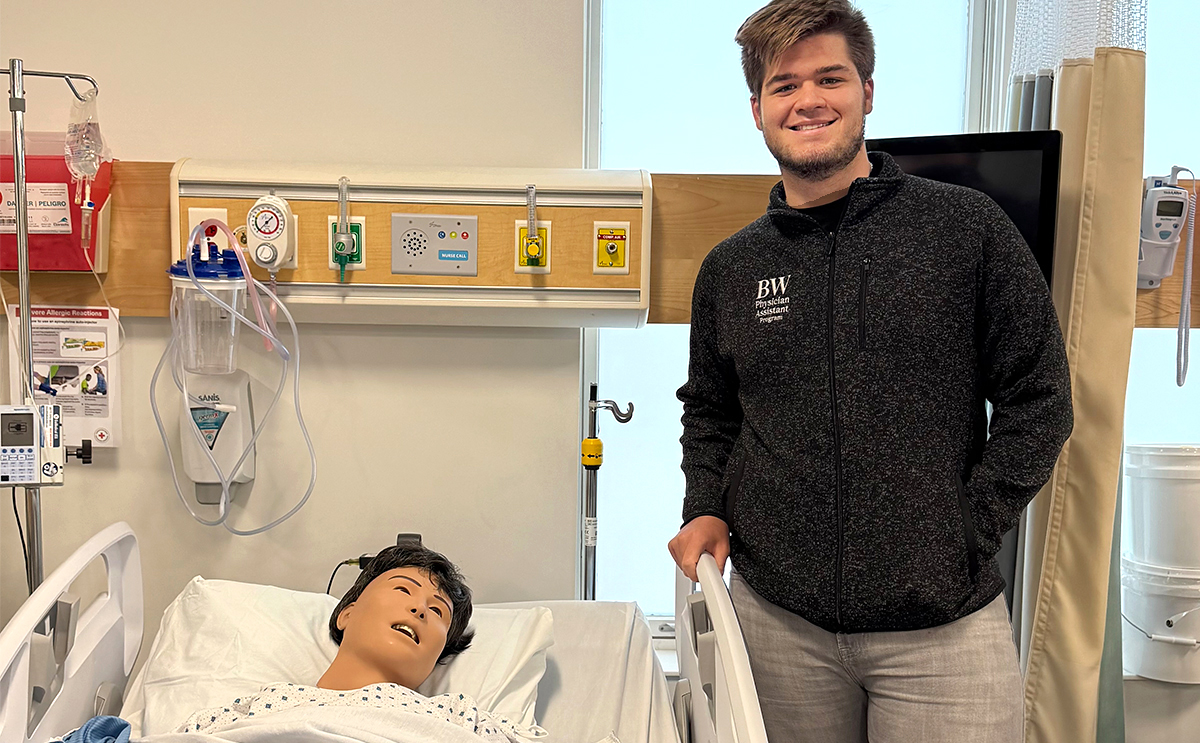It's a rare opportunity at the undergraduate level — let alone at a private university of BW's size. For students, the anatomy and cadaver lab is a game-changer in real-world learning.

The lab offers aspiring medical and healthcare professionals an experience that can be comparable to first-year medical school studies. For BW students in other majors, the lab offers an immersive opportunity to uniquely and more fully study human anatomy.
BW assistant professor of biology Dr. Reed Davis, who teaches in the lab, describes it as an invaluable campus resource that is used year-round for four undergraduate courses and one graduate course in the physician assistant program.
Davis went on to say that the most commonly represented student populations in the anatomy and cadaver lab are biology and nursing majors. There are also benefits, he said, for students seeking careers in exercise science, occupational and physical therapy, public health, chemistry, physics and engineering (in particular, biomedical engineering).
Likewise, Davis believes the lab can be advantageous for the arts. For example, it could improve one's ability to more accurately capture the human form in illustration. Or, students in dance may more readily understand the muscles of the lower limb to improve their form. He also suggested voice majors may want to visualize the larynx to better comprehend vocal production for performance.

"What makes our lab unique and outstanding is the fact that we use REAL cadavers," emphasized Davis. "Many schools will use virtual reality (VR) headsets with anatomy-specific programs.
"But humans are variable. To capture that variability, we need actual cadavers. Students need to know that not everything they encounter may be just as it appears in a textbook or VR," he explained.
"In any given class, I have to adjust expectations when we find out some organ was removed in the cadaver's life or looks somewhat different or is in a slightly different location than the book says it is," remarked Davis.
He went on to say that a cadaver lab can be an eye-opening experience for other reasons. "There are various smells and sights one might not have expected. Some students are ‘all in' and others completely change their career plans," he admitted.

"Students who take a BW dissection-based course before they get into their graduate programs are really set up for success because many of their peers will not have seen a cadaver at the undergraduate level," stated Davis.
"In particular, BW students who take BIO 330, where they have the chance to actually perform the dissections themselves under faculty supervision, become well versed in where key landmark structures are and how to efficiently remove organs from a cadaver," he said.
Richard Dilworth knows firsthand the benefits of a real cadaver experience. He took the BIO 330 course before graduating in May as a pre-allied health/pre-physical therapy major.
"Before my first interaction with the cadaver, I anticipated feeling overwhelmed by the experience and unsure if I would be able to fully engage with the material. However, once in the lab, I found myself fascinated by the opportunity to see structures in their true form," explained Dilworth.

"The cadaver provided a three-dimensional, real-world perspective that enhanced my understanding of anatomy and helped solidify concepts that had previously felt confusing," he acknowledged. "Working closely with faculty allowed for mentorship and guidance. Collaborating with peers in the lab built teamwork and problem-solving abilities, both of which are crucial in clinical practice," added Dilworth.
"The cadaver lab not only strengthened my academic foundation but also reaffirmed my passion for medicine," stated Dilworth, who is currently a first-year student in BW's physician assistant program. "I feel confident and excited about pursuing a future as a PA, where I can use this knowledge to make a meaningful difference in patients' lives."